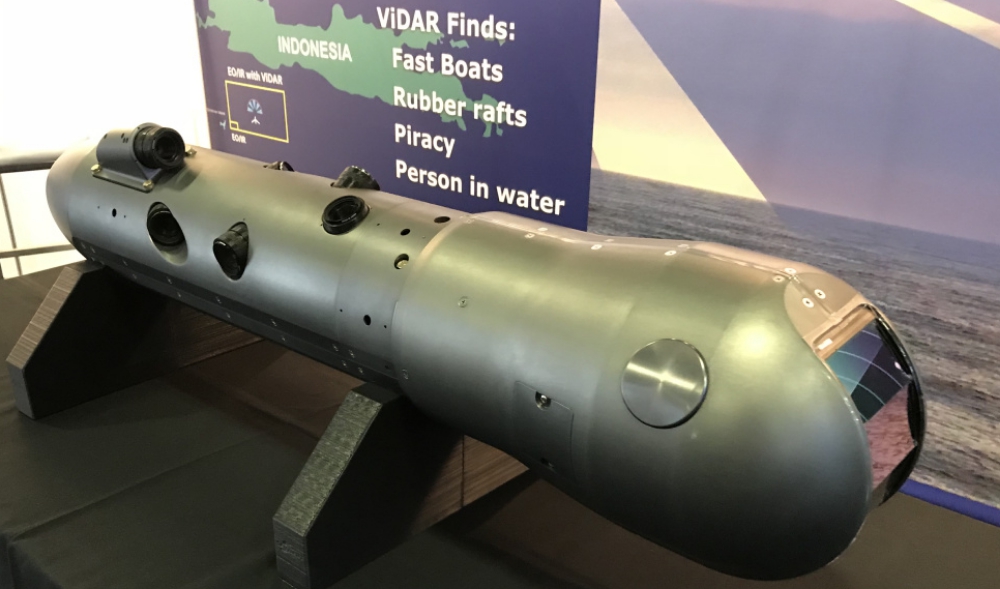Australian sensor video analytics provider Sentient Vision will soon showcase its “game changing” ViDAR optical radar system, which gives tactical Unmanned Aerial Systems (UAS) the ability to cover up to 80 times more ocean in a single sortie than the same UAS equipped with existing EO/IR systems.
The Sentient Vision ViDAR (Visual Detection And Ranging) system is a light, compact self- contained unit comprising a forward facing high-resolution digital video camera that pans through 180 degrees, and software that analyses the resulting image feed to detect objects against an ocean background. The system autonomously detects, tracks and photographs objects, transmitting the image in real time to an airborne sensor console or laptop ground station where operators can then cross-cue the aerial platform’s primary electro-optical sensor to the contact by simply clicking on the image.
ViDAR has been extensively tested on the Boeing Insitu ScanEagle tactical UAS, including formal trials and operational deployments with the US Coast Guard and Royal Australian Navy and is in service with the Australian Maritime Safety Authority, Australia’s national search and rescue agency, aboard its new Challenger 604 SAR aircraft.
“Until now, through limitations with sensors and bandwidth, small tactical UAVs in the maritime surveillance space have generally only been used to keep an eye on surface contacts detected by other means,” said Sentient Vision’s Director of Business Development, Strategy and Partnerships,Simon Olsen.
“But in major trials and operational deployments we have now demonstrated that ViDAR can provide a detection capability for the ScanEagle, that we can autonomously detect targets in the ocean in real time and provide a cue back to the operator. For the first time we’ve demonstrated that a tactical UAV with ViDAR can search vast expanses of ocean and autonomously detect very
small targets at large ranges.”
In the September 2016 USCG trial ViDAR detected a 40-foot boat moving at 25 knots, at a range of 17.7 nautical miles. The system also detected a life raft at 3.7 nautical miles and the USCG “Oscar”, a mannequin designed to represent a single person in the water, at 1.5. nautical miles. ViDAR has even detected an airborne helicopter at 3.5 nautical miles and the periscope of a submerged submarine at 7.5.
Sentient’s new podded ViDAR system, on display on stand 1500 is lightweight and compact for easy mounting on helicopters and virtually any fixed wing aircraft.
“Size, Weight and Power (SWaP) factors define the capability and cost-effectiveness of low altitude manned aircraft and helicopters,” Simon Olsen said.
“The small footprint and compact size that make ViDAR ideal for unmanned vehicles also provide a payload-friendly, cost-effective solution, easily integrated with existing airframes and compatible with most commercially available sensors. ViDAR can be configured and adapted for missions such as search and rescue, counter narcotics, counter piracy and illegal fishing.”
Source: Press Release

